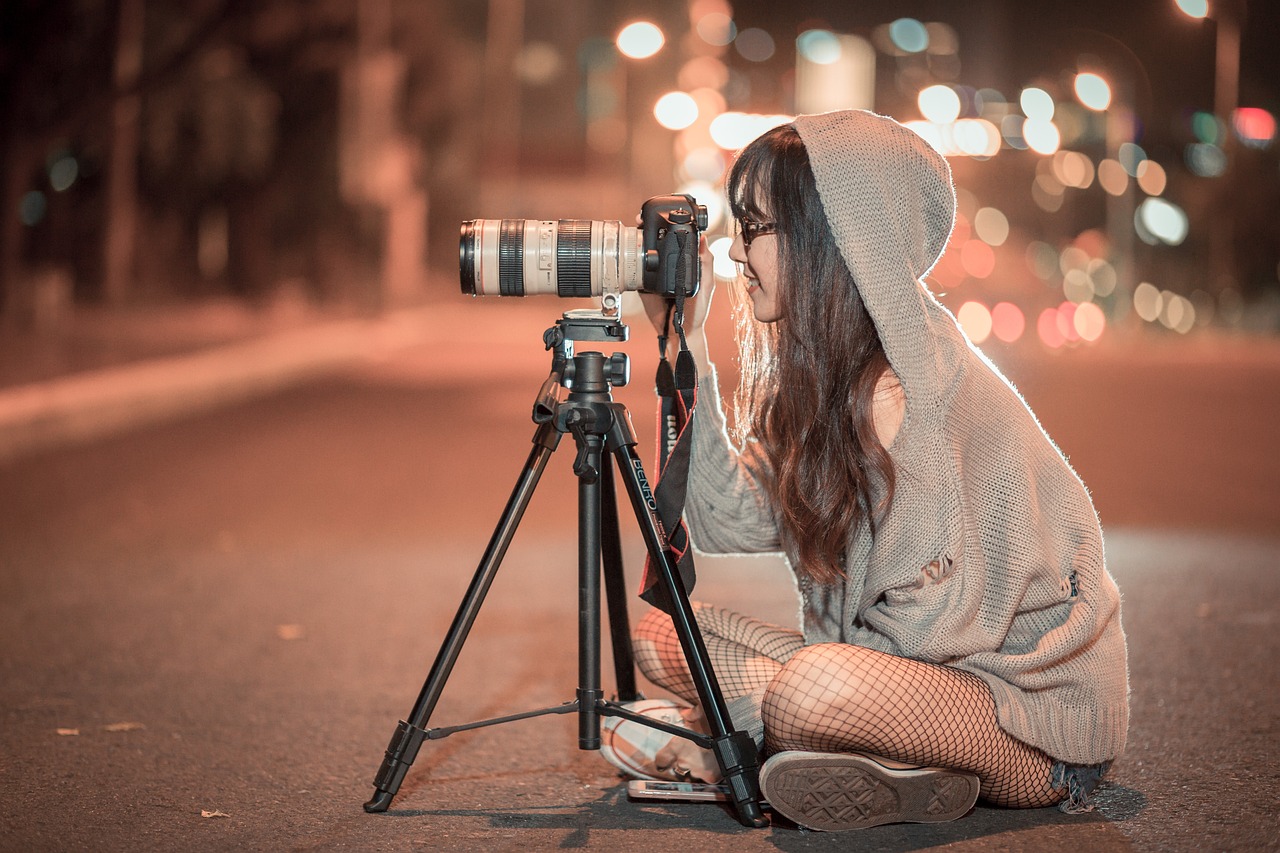
How to Choose the Best Digital Camera for Photography Beginners
For photography beginners, selecting the right digital camera can be overwhelming, with so many options ranging from entry-level to professional models. The key is to find a camera that not only suits your needs but also helps you grow as a photographer without complicating the process. In this guide, we’ll walk you through the most important factors to consider when choosing the best digital camera for photography beginners.
1. Understanding the Basics: What Makes a Good Beginner Camera?
Before diving into the specifics, it’s important to understand the key features that make a digital camera beginner-friendly. A good beginner camera should:
- Be easy to use with intuitive controls.
- Offer good image quality for its price range.
- Be versatile enough for various types of photography, from landscapes to portraits.
- Provide room for learning and growth without overwhelming the user with too many advanced features.
For beginners, the focus should be on finding a camera that balances ease of use with quality, allowing you to get the hang of photography fundamentals while exploring new techniques as you improve.
2. Camera Types: DSLR vs. Mirrorless
One of the first decisions you'll need to make is choosing between a DSLR (Digital Single-Lens Reflex) and a mirrorless camera. Both types of cameras have their pros and cons, and the choice largely depends on your preferences.
DSLR Cameras
DSLR cameras have been the go-to choice for many years. They use a mirror mechanism to reflect light into an optical viewfinder, allowing you to see exactly what the lens sees. DSLRs are known for:
- Durability: DSLRs tend to be sturdy and long-lasting, making them a reliable choice for beginners.
- Optical Viewfinder: The optical viewfinder gives a real-time, lag-free view of your subject.
- Battery Life: DSLRs generally offer longer battery life because they don’t rely on electronic viewfinders.
However, DSLRs can be bulkier and heavier compared to mirrorless cameras, which might make them less convenient for travel or casual photography.
Mirrorless Cameras
Mirrorless cameras have been gaining popularity due to their compact size and modern features. Instead of using a mirror, light passes directly to the sensor, and an electronic viewfinder or LCD screen is used to frame shots.
Key benefits of mirrorless cameras include:
- Compact Size: They are lighter and smaller, making them ideal for on-the-go photographers.
- Real-Time Exposure Previews: Mirrorless cameras display real-time exposure and focus adjustments on the screen or EVF, making it easier for beginners to learn.
- Advanced Autofocus: Many mirrorless cameras have more advanced autofocus systems, especially when it comes to tracking moving subjects.
On the downside, mirrorless cameras may have shorter battery life compared to DSLRs due to the electronic viewfinders and screens being constantly active.
3. Sensor Size: Full-Frame vs. APS-C vs. Micro Four Thirds
A camera’s sensor size directly impacts image quality, particularly in terms of low-light performance, depth of field, and overall sharpness. For beginners, there are three main sensor types to consider:
Full-Frame Sensors
Full-frame sensors are the largest commonly available sensors and are often found in high-end professional cameras. While full-frame cameras deliver superior image quality, they also tend to be more expensive and bulkier.
- Best For: Serious hobbyists or beginners who want the highest image quality and are willing to invest in a more expensive setup.
- Drawback: Full-frame cameras and lenses tend to be more expensive and less portable, which might not be ideal for casual use.
APS-C Sensors
APS-C sensors are slightly smaller than full-frame sensors and are the most common type found in beginner and mid-range cameras. They offer an excellent balance between image quality and cost.
- Best For: General photography, including landscapes, portraits, and street photography.
- Benefit: APS-C cameras tend to be more affordable and are a great choice for beginners who want good image quality without the full-frame price tag.
Micro Four Thirds Sensors
Micro Four Thirds sensors are smaller than both APS-C and full-frame sensors. They are often found in mirrorless cameras, particularly those geared toward portability.
- Best For: Travel, casual photography, and videography.
- Benefit: Micro Four Thirds cameras are usually compact, lightweight, and ideal for photographers who prioritize convenience over maximum image quality.
As a beginner, APS-C sensors are a great starting point as they provide high-quality images at a more affordable price and come in a variety of camera types.
4. Megapixels: How Many Do You Really Need?
While megapixels are often highlighted in camera marketing, they are not the sole determinant of image quality. A higher megapixel count allows for more detail in your images, but after a certain point, more megapixels don’t necessarily translate to better photos for most beginners.
What’s the Right Megapixel Count for Beginners?
- 12-24 MP: This range is more than enough for most beginners. Cameras with 12-24 megapixels will give you enough resolution for high-quality prints and cropping flexibility while keeping file sizes manageable.
- Over 24 MP: While cameras with 30+ megapixels offer more detail, they also create larger file sizes, which can require more storage and slow down post-processing. This level of resolution is generally more useful for professional photographers who need to print large images or crop heavily.
For most beginner photographers, focusing too much on megapixels isn’t necessary. A camera in the 16-24 MP range will deliver more than enough quality for everyday photography.
5. Autofocus: Speed and Accuracy Matter
For beginners, a fast and accurate autofocus (AF) system is essential, especially when shooting subjects in motion or in low light. Most modern digital cameras offer reliable autofocus systems, but there are a few things to consider when choosing a camera:
Autofocus Points
- Fewer AF Points (e.g., 9-11): Older or entry-level cameras may have fewer autofocus points, which can limit your ability to focus on specific areas of the frame.
- More AF Points (e.g., 30-60): Modern cameras often have more autofocus points, which give you greater control over where the camera focuses, especially for off-center subjects.
Autofocus Modes
- Single AF (AF-S): Ideal for stationary subjects like landscapes or portraits.
- Continuous AF (AF-C): Useful for tracking moving subjects, such as wildlife or sports action.
If you're new to photography, look for a camera with a reliable autofocus system that works well for general shooting. Mirrorless cameras, in particular, often have advanced autofocus technology, including face and eye detection, which can make getting sharp focus easier for beginners.
6. Lens Compatibility and Options
One of the biggest advantages of investing in a digital camera is the ability to change lenses based on your photography needs. However, not all cameras have access to the same range of lenses, so it’s important to consider lens compatibility when buying your first camera.
Key Considerations:
- Kit Lenses: Many beginner cameras come with a "kit lens," usually a zoom lens with a focal range of 18-55mm. While this lens is great for starting out, you’ll eventually want to explore other lenses like prime lenses (with fixed focal lengths) for more creative control.
- Lens Mount: Each camera brand has its own lens mount system, meaning that lenses for one brand (e.g., Canon, Nikon, Sony) might not work with another without adapters.
- Future Expansion: Choose a camera brand that offers a wide variety of lenses for different types of photography, from wide-angle to telephoto.
For beginners, starting with a kit lens is a great way to learn the basics. As you progress, you can expand your lens collection based on your specific interests, such as portraits, macro photography, or landscapes.
7. Ease of Use: Menu System and Controls
As a beginner, you want a camera that is easy to use, with intuitive controls and a menu system that doesn’t overwhelm you with options.
What to Look For:
- Touchscreen Interface: Many modern cameras offer touchscreens, which can make navigating menus and changing settings more intuitive, especially for beginners used to smartphones.
- Simple Menus: Some cameras have complex menu systems that can be hard to navigate for beginners. Look for cameras that offer simplified menus or “guided” modes that help explain different settings.
- Manual Controls: As you grow as a photographer, you’ll want to experiment with manual settings, like adjusting shutter speed, aperture, and ISO. Make sure the camera you choose offers these options, even if you’re starting with auto modes.
A camera with a well-designed user interface and easy access to controls will make your learning experience much more enjoyable.
8. Video Capabilities: Are You Interested in Video?
If you’re interested in shooting video as well as photos, pay attention to the camera’s video features. Many beginner cameras now offer 4K video recording, which delivers high-quality video for vlogs, YouTube content, or family videos.
Key Video Features to Look For:
- 4K Resolution: Even if you don’t plan on shooting a lot of video now, having 4K capability ensures your camera is future-proof.
- Frame Rates: Look for cameras that offer 24fps, 30fps, or even 60fps for smooth video.
- External Microphone Input: If you plan to shoot a lot of video, having an external microphone input allows you to capture higher-quality audio.
Not all beginner cameras offer great video capabilities, but if video is important to you, choose one with a good balance between photo and video performance.
9. Price and Budget: Finding the Best Value
For most beginners, price is one of the biggest factors in choosing a camera. Luckily, there are excellent beginner-friendly cameras available across a range of budgets.
Entry-Level ($400 - $800)
- Best For: New photographers on a tight budget.
- Cameras: Look for older DSLR models or beginner mirrorless cameras that offer good image quality at a lower price point.
Mid-Range ($800 - $1500)
- Best For: Enthusiast beginners who want more features and better image quality without jumping to professional-level gear.
- Cameras: Mid-range DSLRs and mirrorless cameras, which often include better autofocus systems, larger sensors, and more lens options.
High-End Beginner ($1500+)
- Best For: Serious hobbyists or those who want a camera they can grow into for years to come.
- Cameras: These models often offer full-frame sensors, advanced autofocus, and the best overall image quality, making them ideal for long-term use.
Conclusion
Choosing the best digital camera for photography beginners comes down to finding the right balance between ease of use, features, and price. By considering factors like camera type, sensor size, autofocus, and video capabilities, you can find a camera that not only meets your current needs but also allows you to grow as a photographer.
As you start your photography journey, remember that the best camera is the one that feels comfortable to use and inspires you to capture stunning images. With the right camera in hand, you'll be well on your way to mastering photography!
